This is a continuation of a series of posts on the Sony a7III. You should be able to find all the posts about that camera in the Category List on the right sidebar, below the Articles widget. There’s a drop-down menu there that you can use to get to all the posts in this series; just look for “a7III”.
In the previous post, I looked at the engineering dynamic range (EDR) of the Sony a7III in six modes for uncompressed raw files:
- Single Shot (SS), all-mechanical (MS)
- SS, electronic first-curtain shutter (EFCS)
- SS, silent shutter, which I’m calling ES so as not to get it confused with single shot.
- Continuous Low (CL), MS
- CL, EFCS
- CL, ES
In all cases, the base ISO EDR approached 14 bits, which is quite impressive. Switching to compressed raw lowered the EDR only slightly.
But what about continuous mode bracketing, where the camera makes all of the bracketed exposures with one shutter release depression? Continuous bracketing with uncompressed raw files and the electronic shutter doesn’t work. Well, it sort of works. You get exposures, but only one of them, and there’s no actual bracketing.
[A reader has pointed out that this is fixed in firmware 1.10]
With the mechanical shutter, continuous bracketing gives you the following EDR vs ISO curve:
In the above curve, I plotted the EDR for all three exposures. Since I picked 1/3 stop bracketing around 1/1000 second, the exposures were all pretty much alike, so the curve looks like the curve for a single set of exposures. If we zoom in, we can see the discontinuities:
Now let’s put the camera into the compressed mode, and look at both the mechanical shutter case and the electronic shutter one.
We’ve lost more than a stop of EDR!
Zooming in:
Yep. In compressed mode, EDR suffers considerably.
Why is that? Let’s look at some histograms:
Uncompressed at base ISO:
Compressed at base ISO.
The precision has dropped to 12 bits, and the noise is higher.
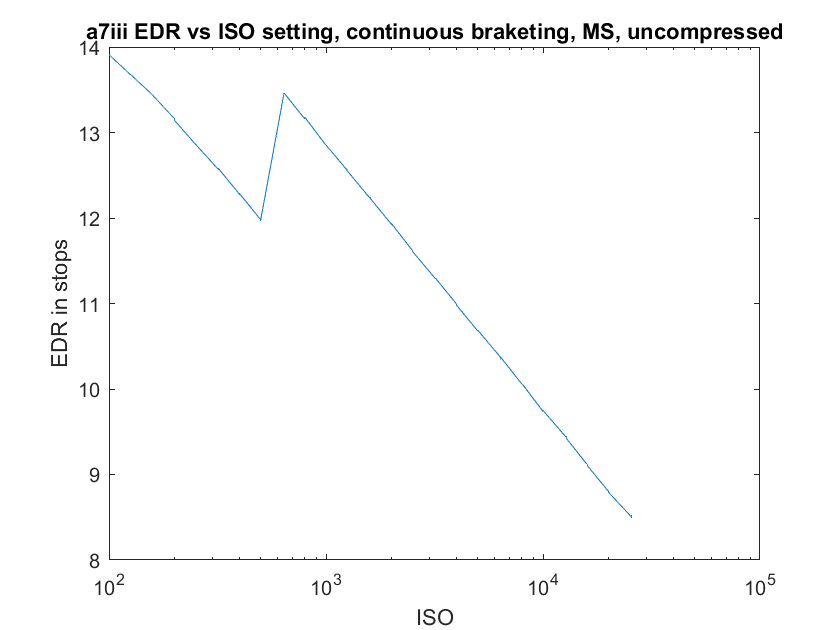
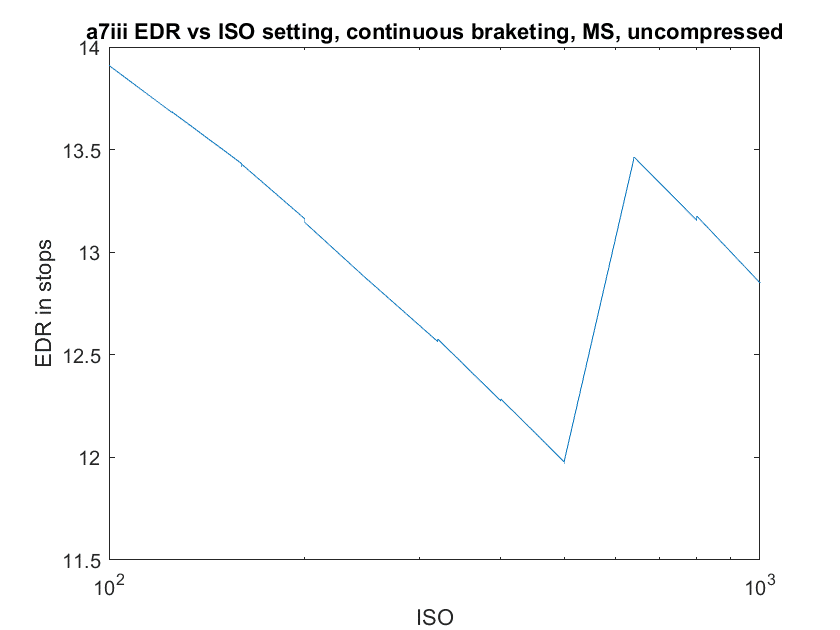
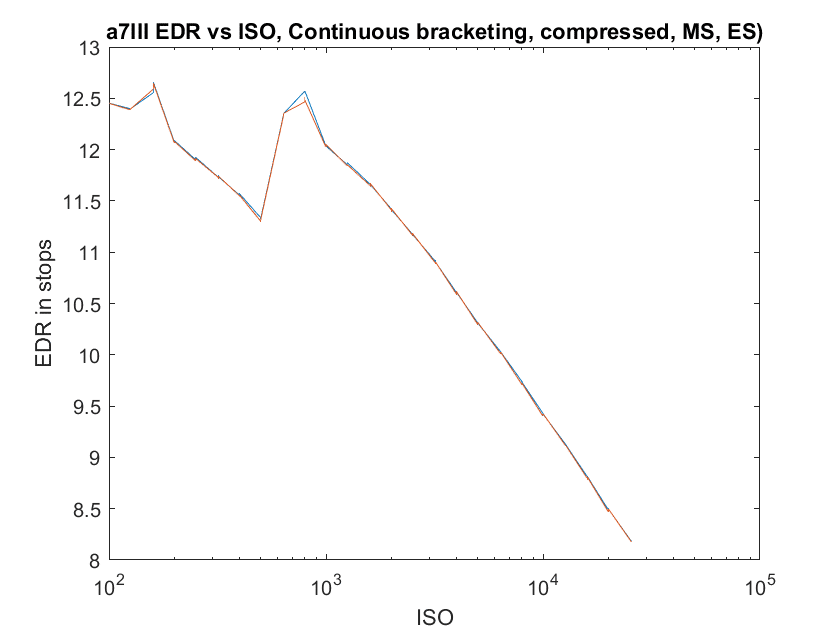
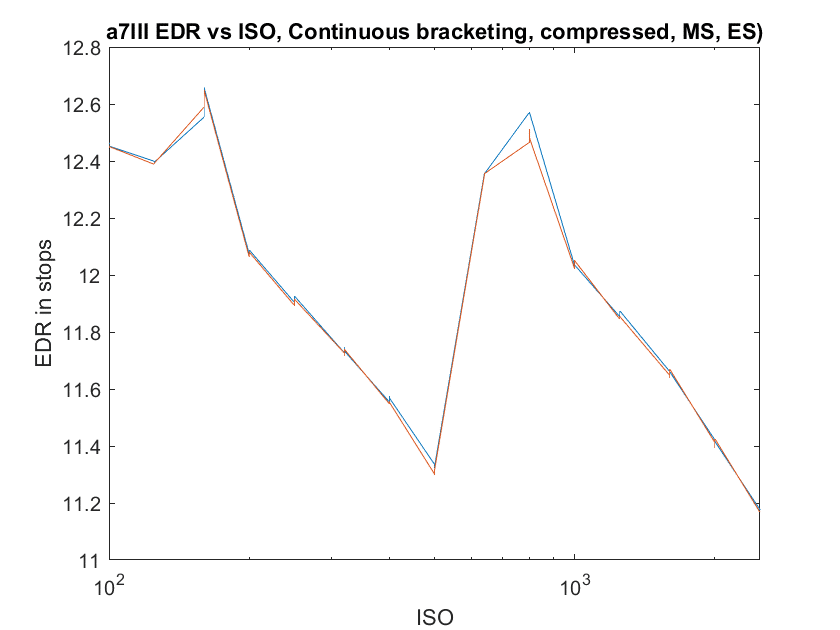
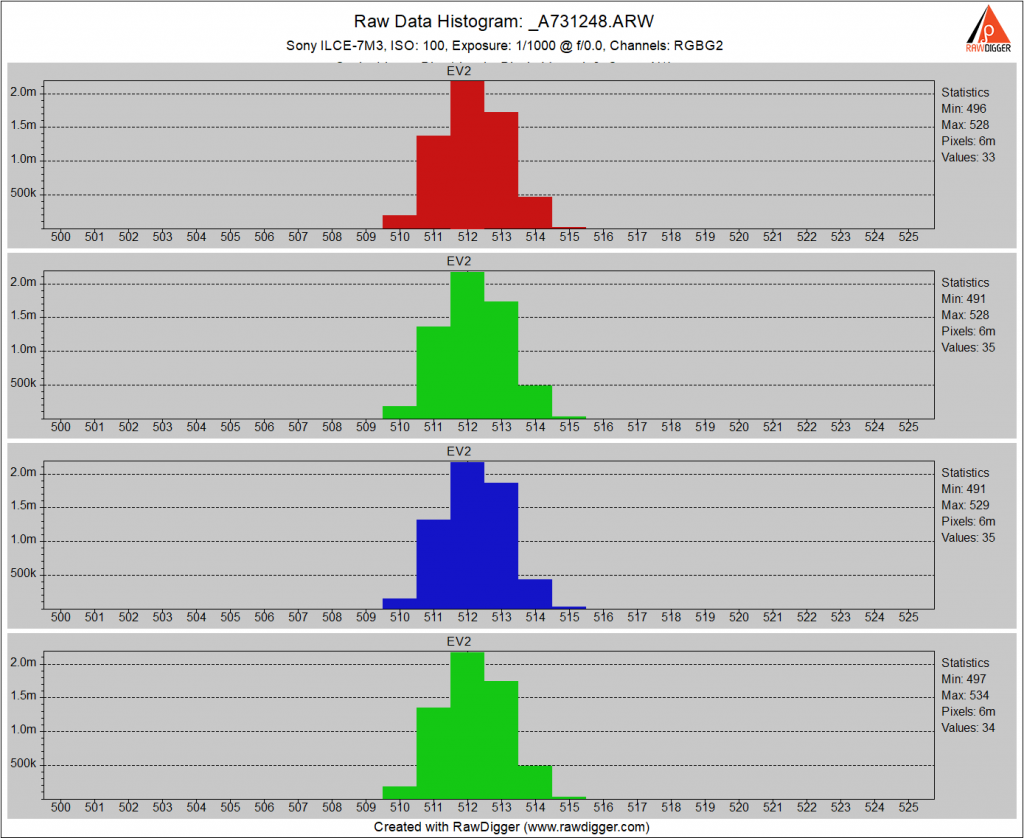
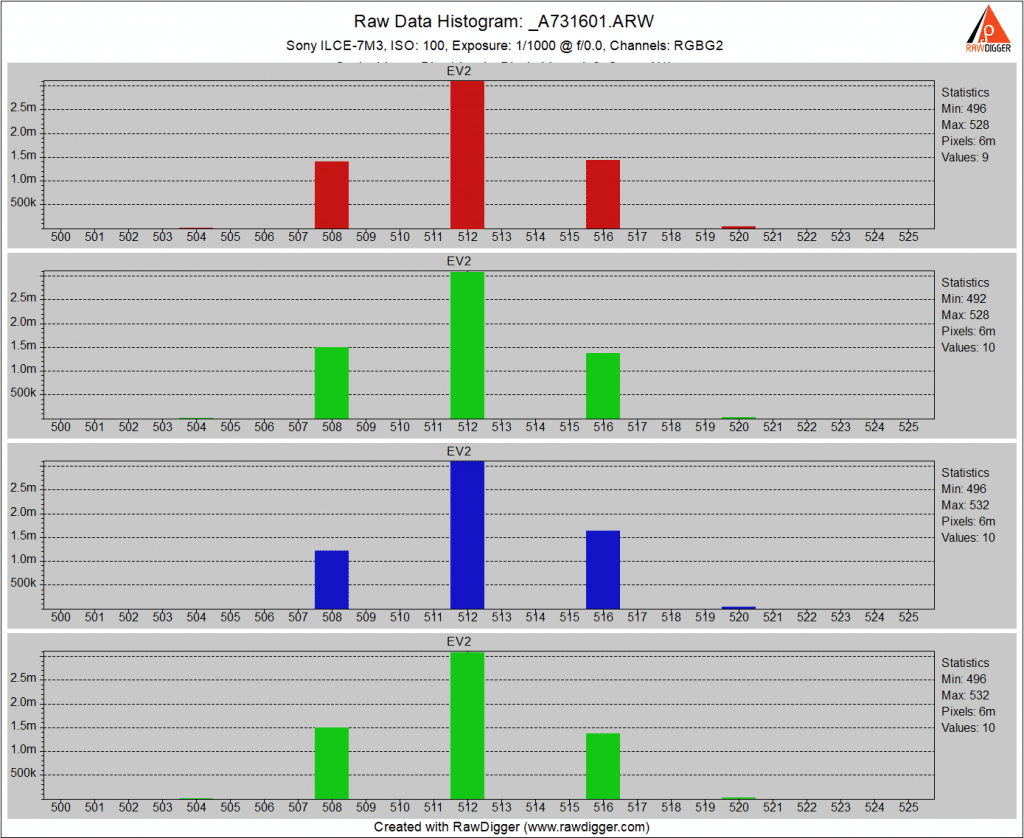
Believe this was fixed in firmware 1.10.
> Adds support for bracketing during silent shooting with uncompressed RAW.
Thanks! I’ll add a note.